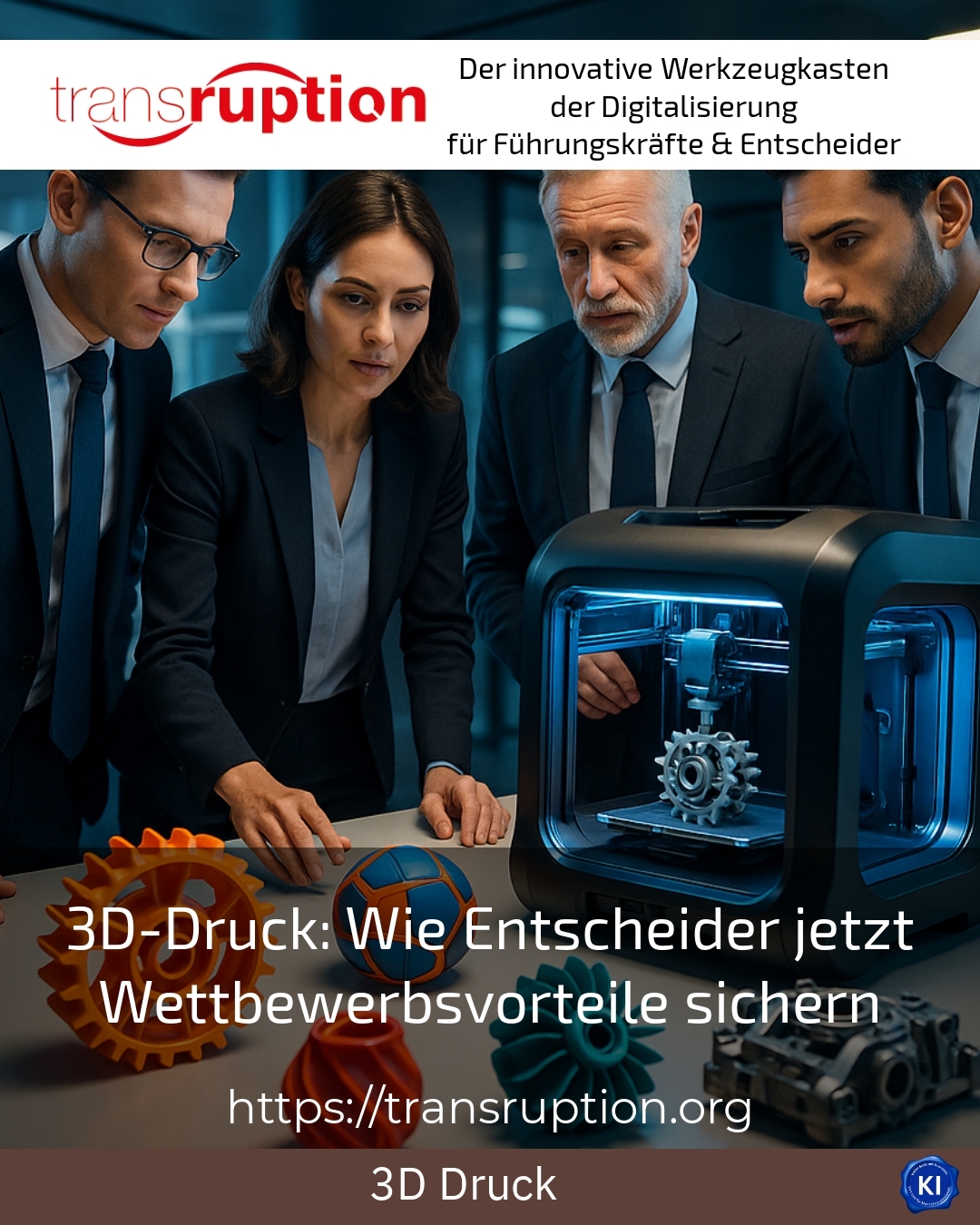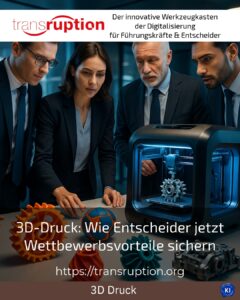How 3D printing technology can give you a competitive edge
3D printing technology opens up a wide range of opportunities for companies to realise innovations more quickly and thus achieve competitive advantages. Key features include shorter development times, flexibility in production and the ability to react quickly and cost-effectively to market changes. The integration of this technology into existing processes helps decision-makers to effectively support and optimise product development and production projects.
3D printing technology: faster from idea to marketable product
Companies in many industries report that they can significantly speed up their prototype development using 3D printing technology. Conventional processes such as tool and mould making often take weeks or months, whereas 3D printing enables prototypes and components to be produced in days. This means that designs can be quickly tested, adapted and improved. This leads to a continuous innovation process without delays. The faster market launch of new products is a significant advantage in highly competitive markets and gives companies flexibility in the face of changing customer requirements.
BEST PRACTICE at company XYZ (name changed due to NDA contract) A medium-sized mechanical engineering company makes intensive use of 3D printing technology to produce customised prototypes directly from CAD data. The rapid realisation of new design variants helps the developers to go through many iterations in a short space of time and to sound out the final solution much more efficiently. This has enabled them to shorten the development cycle by around 40 %.
Wide range of applications for 3D printing technology
3D printing technology has long been used for more than just prototypes. For small and medium-sized companies, it offers particular advantages for small series production. The elimination of tool costs and set-up times significantly reduces production costs for smaller quantities. In addition, a greater variety of products is possible without additional economic expenditure. Spare parts can also be produced flexibly and in line with demand. This means that there are no long delivery times or storage costs when market conditions change.
BEST PRACTICE at ABC (name changed due to NDA contract) A manufacturer in the medical technology sector uses 3D printing to quickly produce customised implants and tool components. The technology makes it possible to respond flexibly to customer requests and also produce unusual geometries economically. The company reports higher customer satisfaction and a significantly faster service process.
Flexibility and agility through digital manufacturing
3D printing technology makes production processes more digital and quicker to customise. Companies can have new components manufactured directly via data transfer if required. This makes them more resilient to supply chain bottlenecks and global crises. Decision-makers benefit from increased planning reliability and can manage projects more efficiently as they can control production better and recognise bottlenecks at an early stage.
BEST PRACTICE at DEF (name changed due to NDA contract) In the aviation industry, a supplier uses 3D printing technology to provide spare parts and special components at short notice. As a result, the company has stabilised its ability to supply customers and minimised warehousing costs at the same time. The improved flexibility strengthens its position in global competition in the long term.
3D printing technology as part of a sustainable corporate strategy
Additive manufacturing makes it possible to use materials more efficiently and reduce waste. This helps to better fulfil ecological goals and sustainability requirements. Companies receive impetus to organise their production in a more resource-efficient way and reduce costs in the long term. More and more decision-makers see this as support for their future strategy, which combines ecological and economic aspects.
My analysis
3D printing technology offers opportunities to realise competitive advantages for a wide range of industries. Decision-makers are increasingly utilising it to shorten development times, respond flexibly to market requirements and make production processes more sustainable. Projects involving this technology are often supported with targeted assistance, focussing on impulses for optimal integration. 3D printing technology is not a panacea, but together with other innovations it can help to make the company fit for the future and agile.
Further links from the text above:
[1] Unleash innovation: The benefits of 3D printing for rapid prototyping and product development
[4] Benefits of 3D printing for small businesses
[6] Success strategy - 3D printing - Harscher prototyping
[8] 3D printing for small businesses: A competitive advantage
For more information and if you have any questions, please contact Contact us or read more blog posts on the topic TRANSRUPTION here.
















